Abstract
The article examines the issues of studying the degree of
susceptibility of sloping lands in Azerbaijan in the example of specific
administrative territorial units, flat areas with a slope of up to 6%
(about 3.50) are concentrated in Akhsu district 71%, and in
Shemakha almost 49%. The steepest slopes are observed in the Ismaili
region, where almost 26% of the territory has a slope of
10-18%, 30% of its area slope is 18%.
Introduction
Figure 1 Spatial analysis includes operations performed on
geographic data using available methods and techniques in GIS
software, with a view to describing the relationships between
elements of the geographical environment. The analysis can be
carried out on the data, both in the vector and raster systems, and
touch the geometry and attributes of the vector data [1-8].
Search for Information in the Database
The main operation that can be performed based on the GIS
database is information retrieval. This database has a relational
nature and therefore, the object designation provokes the selection of
the corresponding records from the corresponding attribute
table, and vice versa. The first thematic layer in the database was
the Digital Elevation Model in raster format. On its basis, as a result
of the transformations and calculations, information on the height
of the nos. and the slope of the terrain on the territory of Azerbaijan
selected for analysis, which includes three regions: Shemakha,
Akhsu and Ismayilli.
Vertical Position Factor
The major part of the study area is in the following ranges of
heights: 1) from 0 to 300 mas-23.16%, from 300 to 600 m-19.84%
and 3) 600-900 m-23, 75% of the total area. Above 900 m and up
to 3400 m above sea level, about 30% of its area is located (Table
1). Of the administrative units belonging to the study area, the
most highly allocated land Ismaili region. In this area 90: it is at an
altitude of more than 300 meters above sea level, and sometimes
the altitude is even higher than 3400 m. In Akhsu region about 73%
of the earth is at an altitude up to the sea level. Shemakha district
is an intermediate region, its largest area is at an altitude of 900
m above sea level-about 75%. In this area there is also a territory
located below sea level-31244.66 hectares [8-18].
Classes of Slope
In the analyzed territory, the largest area is occupied by areas
with a slope of up to 6-46%. Significant areas are also in the intervals
from 6 to 10% -18% and from 18% to almost 23% of the total area (Table
2). Against the backdrop of administrative-territorial units,
gently sloping areas with a slope of up to 6% (about 3.50) are
concentrated in the Akhsu district 71%, and in Shemakha almost
49%. The steepest slopes are observed in the Ismaili region, where
almost 26% of the territory has a slope of 10-18%, 30% of its area
slope is 18%.
Classes of the Slope of the Terrain, Depending on the Altitude Intervals
Table 3: The distribution of the territory of the Shemakha district according to the grades of the terrain according to the altitude
intervals.
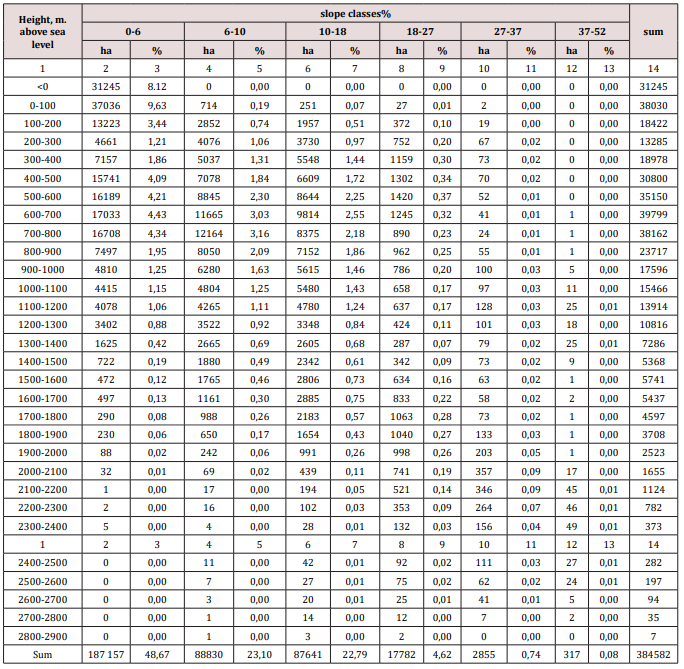

Table 4: Distribution of the territory of the Akhsu region according to the grade of the terrain depending on the altitude interval.
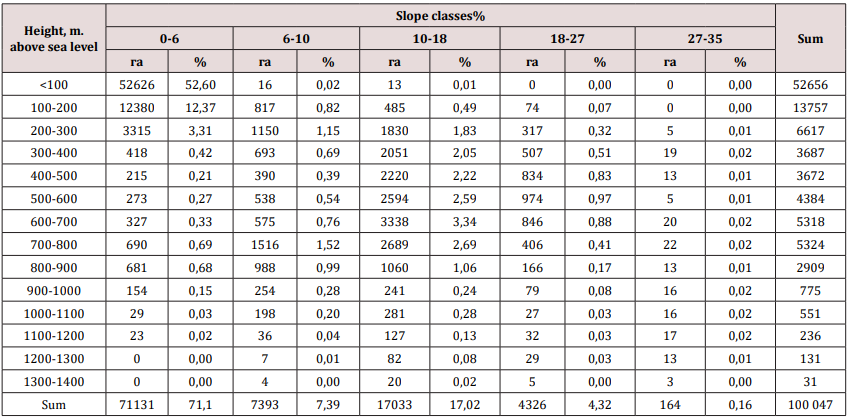

Table 5: The distribution of the territory of the Isma yilli
region according to the grades of the terrain according to the altitude
intervals.
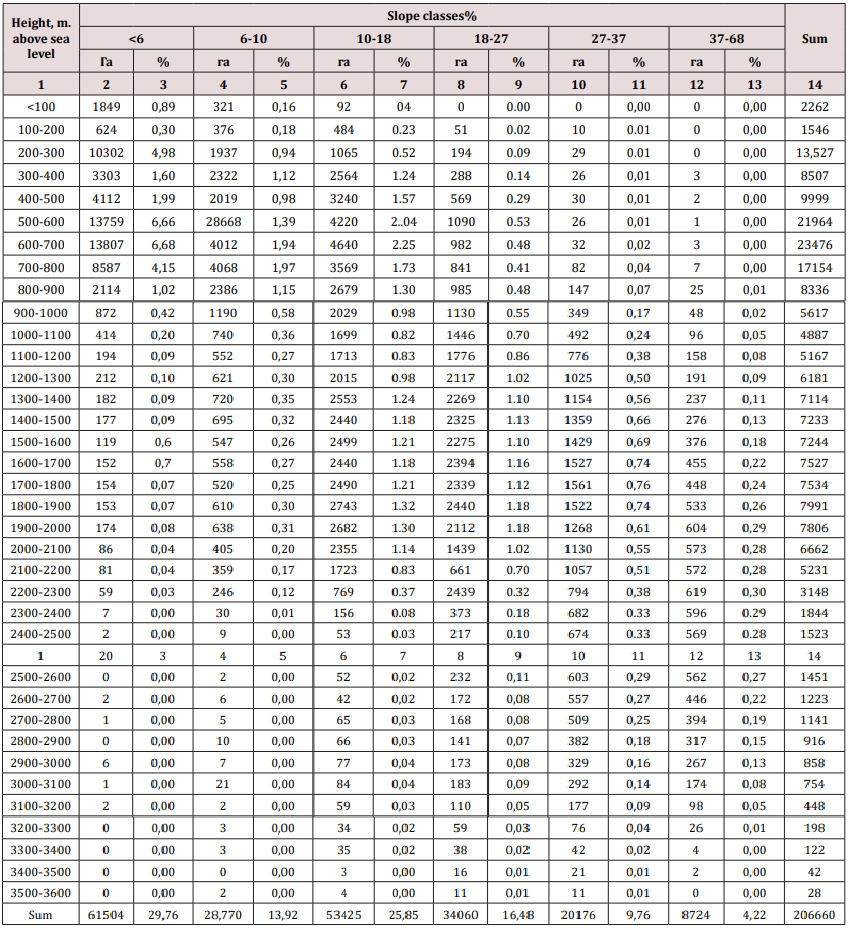

Tables 3-5 contain data that allow analyzing the distribution of
the slope of the terrain along altitude intervals. This distribution
was prepared for all administrative units of the area under
consideration. In the Shemakha region, a clear dependence is
shown, an increase in the slope, along with an increase in altitude
above sea level. Up to a height of 1200 m there are lands with a slight
slope-up to 6% (3.50). They occupy 49% of the area. Territories
here with a slope of 6-10% and 10-18% are located at an altitude
of 400-1700 m. M.u.m. about 23% of the area’s area. Areas with a
slope of more than 18% make up more than 5% of the total area
and are located in the highlands. In the Aksuinsky area, the terrain
with an insignificant slope of up to 6% (3.50) prevails and they are
located mainly at an altitude of 300 m above sea level - this is 71%
of the total area. Areas with a slope of more than 6% are located at
altitudes from 300 to 1400 m above sea level - about 29%. Clearly
marked (17% of the total area) of land with a slope of 10-18% (6-
100) (Table 4).
In the Ismayilli region, most of the territory with a slope of &alt;6
to 10% is located at an altitude of 300 to 900 m above sea level.
Areas with a slope of 10 to 37% occur at an altitude of 3000 meters
above sea level. Locations with a slope of more than 37%% are
located at the highest altitude but make up only 4% of the total area
of the area. The second, from the thematic layers created in the
database, is the land use of the study area. Due to the availability
of cartographic materials, it was considered exclusively for the
territory of the Akhsu district.
Analysis of the structure of land use in the Akhsu district
showed that it is purely agricultural. The area is dominated by
arable land, which makes up about 50% and tilled areas, which
include pastures, meadows and degrees - more than 23% of the
total area. Agricultural lands are supplemented with vegetable
gardens, orchards and vineyards, occupying 3% of the area. There
are few forests and shrubs, in general, about 12%. There are also
areas completely devoid of vegetation in the Akhsu district, about
4% of them. A small part is occupied by water reservoirs, wetlands
and urban and rural areas, amounting to 6.9% of the total area
(Tables 6-8) provide information on the distribution of land use
patterns over altitudinal intervals and grades of terrain slopes. Most
agricultural land is located at a height of up to 400 m above
sea level. Only pastures are located up to an altitude of 1400 meters
above sea level. forest territories are in all altitude intervals. The
remaining forms of land use are located at lower altitudes (Table
7). Considering the slope of the slopes, most of the territories are in
the gradient class 0-6% - almost 71%. Only pastures, green lands,
as well as deciduous forests, are located on slopes with a higher
slope (Table 8).
Follow on Linkedin : https://www.linkedin.com/company/lupinepublishers
Follow on Twitter : https://twitter.com/lupine_online


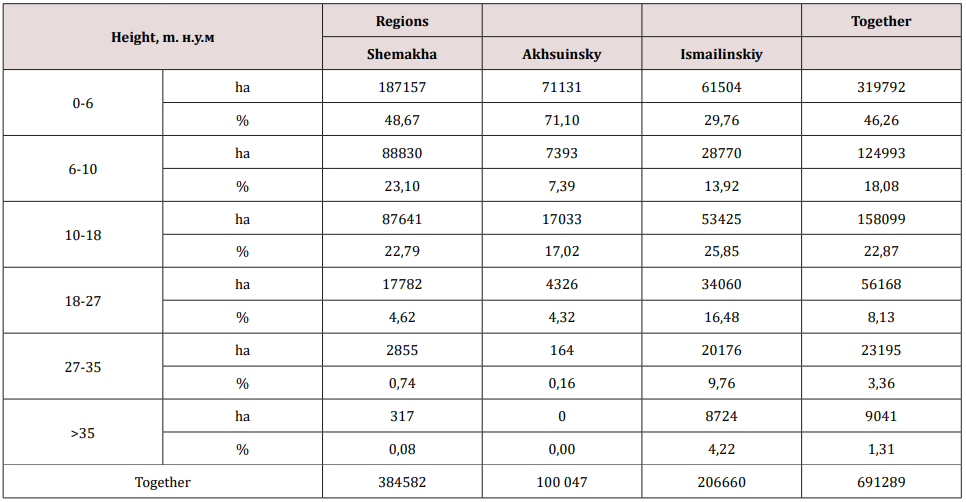
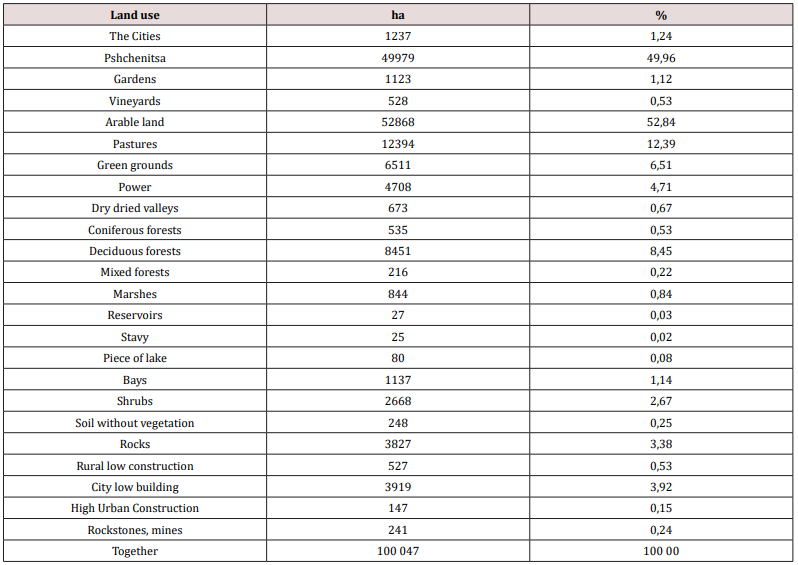

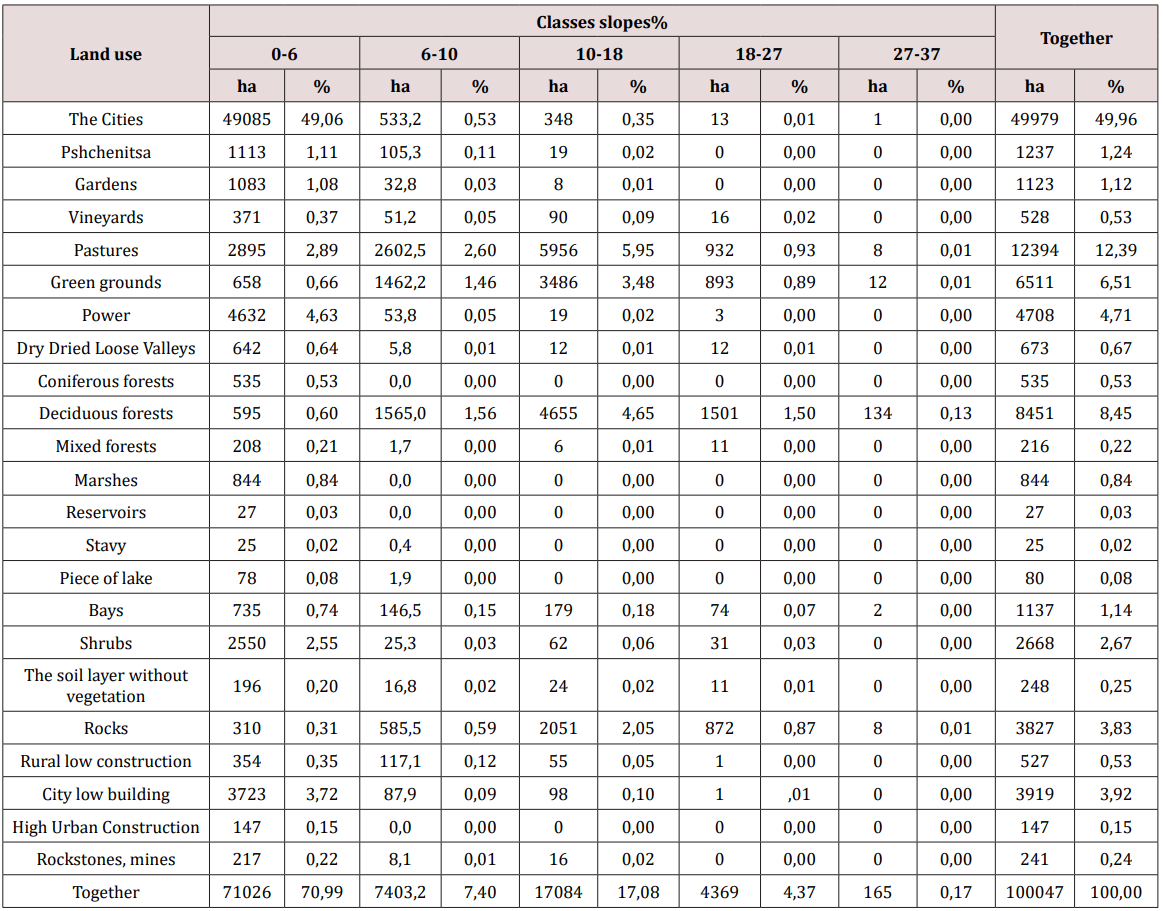
No comments:
Post a Comment
Note: only a member of this blog may post a comment.